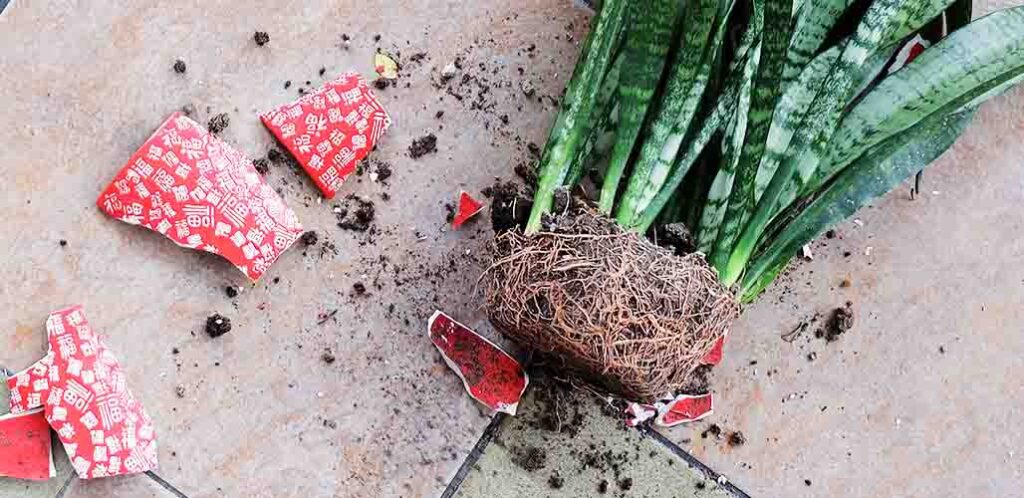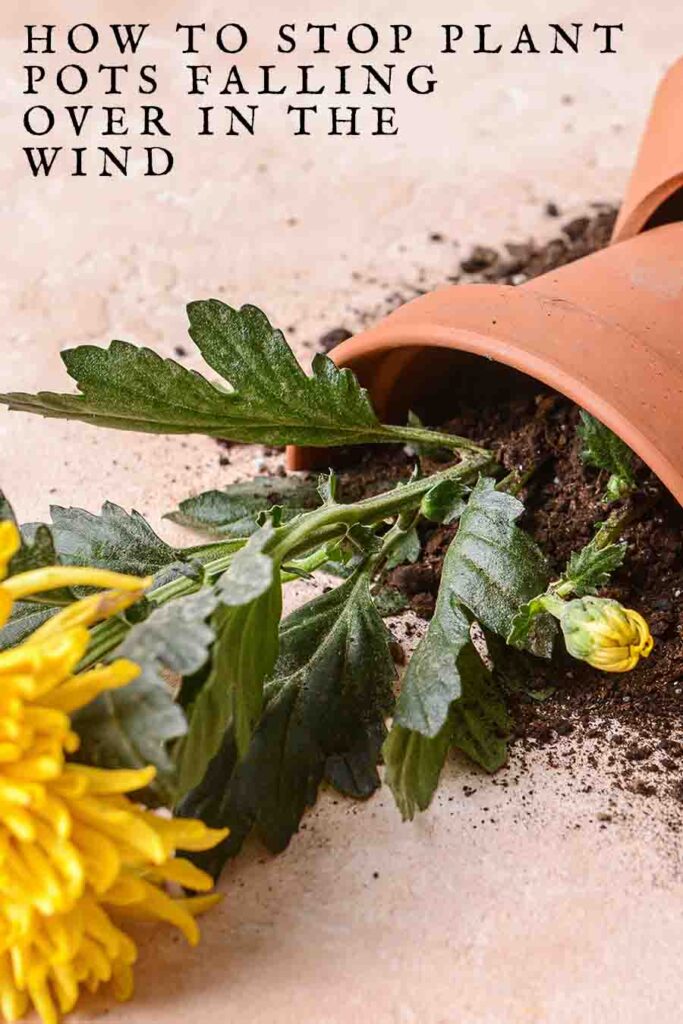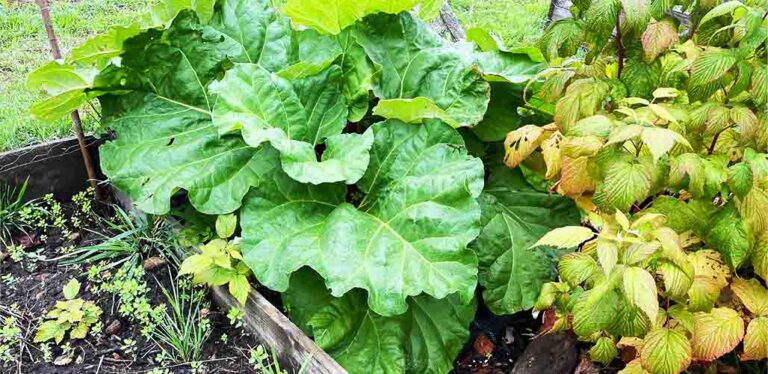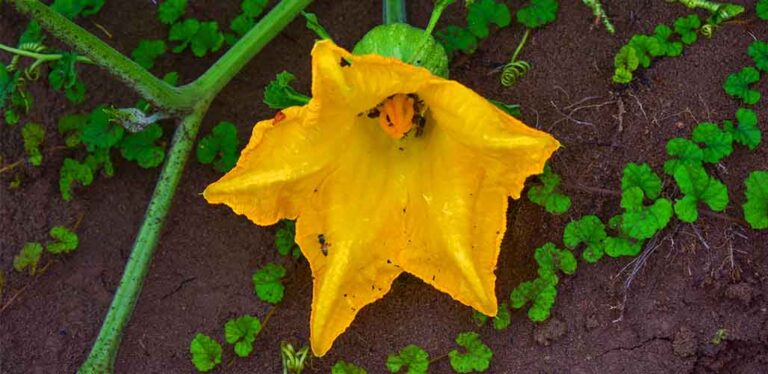How To Stop Plant Pots Falling Over In Wind

New signs of spring appear every week at this time of year, and as I finally put another winter behind me, I’ve learned a few more lessons about how to protect my garden during the worst kinds of weather. I’ve specifically been thinking about how to stop plant pots falling over in wind swept weather this month. It’s a problem I have all year round, and I already have some reliable solutions for, such as choosing containers made from heavy materials, and keeping them well-watered. But after a couple more losses recently, I have found some new ideas to try in the coming growing season. And I’ve collected them here with everything that has worked for me in the past – so I hope they help you too.
Contents
How to stop plant pots falling over in wind
The most practical solution for keeping your plant pots upright depends on a few things, like:
- Are we talking about pots you already own, or have you yet to purchase them?
- If you already own them, are they empty or occupied at the moment?
- What materials do you have access to, or is it realistic to bring home?
- What kind of garden do you have (big? small? balcony?), and do you own it or rent it?
Depending on your circumstances, not every idea in this list might be achievable. But I’m hopeful that their is a solution for everyone, and hopefully even a choice of possibilities. So here we go!

1. Use large pots
Lots of ideas for how to stop plant pots falling over in wind boil down to the same common strategy: make their center of gravity as low and heavy as possible. The easiest way to do this is to use a large pot – at least 12 inches across. The weight of compost in pots at least a foot wide will help anchor them on windy days. And it has other benefits too – a small number of large pots will dry out more slowly than a large number of small pots, and need less watering.
2. Choose heavy pots
I have an eclectic mix of terracotta, fiberclay, metal and plastic pots in my garden, and even a concrete one inherited from the previous owners. And let me tell you – that concrete pot wouldn’t blow over in a hurricane! But whilst concrete containers have their own drawbacks from an environmental and practical point of view, it just makes sense to choose terracotta pots over plastic and metal ones if windy conditions are a concern. If you’ve been disappointed by frost damage to clay pots in the past, overcome this by choosing glazed ones, which tolerate freezing conditions better.
3. Choose straight sided pots
It’s very traditional for plant pots to be wider at the rim, and smaller at the bottom, so they can be stacked efficiently during in transit. But it does make their center of gravity higher, and their base less stable. Straight sided pots tend to be a little more expensive to buy, but they are more stable and harder to knock over. So you’ll make back the price difference when they stay upright and don’t get chipped, cracked or smashed in a fall.
4. Choose pots wider than they are tall
Most plant pots are taller than they are wide, but plant pots with equal proportions, or wider than they are tall, have the most stable shape, which is least likely to blow over. Try looking for containers described as plant bowls rather than pots. Or even small raised beds – these don’t have a base, but you can line them with semi-permeable plastic membrane to keep your compost in place! Plant pots which are wider than they are tall are perfect for growing several plants at once in too, for extra visual impact.
5. Put bricks in the bottom
Let’s turn to those pots you already own next. One simple way to make them heavier and more stable if they have a habit of blowing over is to pop a couple of bricks in the bottom before adding compost and plants. Remember that this will effectively reduce the internal volume of your pot though, so choose your plants accordingly.
6. Make sure they don’t dry out
The pots by my back door invariably blow over more frequently when I’ve let them dry out. This shouldn’t be surprising – the water in compost adds weight to pots which helps keep them upright in windy conditions. When all that water has been used, the dry compost left behind is light and the pot tips more easily. So regular watering will keep your plants in tip-top condition and reduce the likelihood of them falling over in the wind.
7. Choose the right size plants
Choosing the right size plant for your pot is important for several reasons:
- A plant in proportion with its pot looks more visually pleasing.
- Plants in too-small pots will struggle to get enough water and nutrients, and their root system will end up congested.
- They will also dry out faster – see the previous section!
- And tall plants in small pots act like a sail – when the wind catches their foliage, the weight of the pot isn’t enough to anchor it, and the whole lot is easily pulled over.
8. Move them somewhere less windy
Okay, I’ll grant you that this is a bit of a ‘well, duh’ suggestion. And probably one you’ve already considered. But at the same time, I can’t count how many times I have resisted doing the sane and sensible thing, because I was really wedded to my original vision of how I wanted things to turn out. So if that plant which keeps blowing over would be just as happy growing on the other side of your house, and it would be less exposed to the wind there too – just move it. You never know how things will turn out when you start shaking them up – and the result could be even better than your original design. And anyway, you can always move it back again.
9. Anchor them to a wall
Tall plants in pots which blow over easily can be held upright by anchoring them to the wall. Effective ways of doing this include:
- Attaching wooden trellis to the wall (perfect for climbing plants like clematis).
- Running wires between eye-screws, and tying the plant’s stems to the wires (ideal for roses and fruit trees).
- Anchoring the plant against an existing structure like a drainpipe using twine. This is good for annuals like sunflowers and nicotiana, but you have to take care that the wind doesn’t cause the stems to snap against the resistance of the twine. I get around this by standing the pot in front of the drain pipe, so the drainpipe represents 12 o’clock. Then I put bamboo stakes into the edge of the pot at 4 and 8 o’clock, and loop the twine around the drain pipe and the two bamboo canes to create a makeshift triangular plant support. This protects and supports the stems, and anchors the whole lot to the drain pipe.
10. Shield them
Finally, think about sheltering pots downwind from things which will block or at least reduce he wind. For example:
- Put tall plants in small pots downwind from a larger plant in a wide pot.
- On a windy balcony, put a bamboo, reed, or willow screen along the railings facing into the prevailing wind.
- Stand pots next to garden furniture.
Things to consider
Finally, here are some considerations to have in mind before you put your favorite suggestion into action:
- Put your pots in sensible places. Not on a wall with hard paving underneath it for example (which is exactly how I lost two pots this winter). If they’re generally safe there in summer, at least remember to move them in winter.
- Check weight restrictions for roof gardens or balconies before choosing heavy pots or weighing them down.
- In rented properties, ask your landlord before attaching anything to external walls.
How to stop plant pots falling over in wind – summary
There are lots of ways to overcome problems with plant pots blowing over in high winds. The simplest – like choosing wide clay pots, are the easiest to use. But if you already have an established plant in the pot, you can keep it upright by shielding it, or anchoring it to a more permanent structure like a wall.
Let us know what solutions you’ve tried in the comments box down below – have you got another idea to add to this list?






